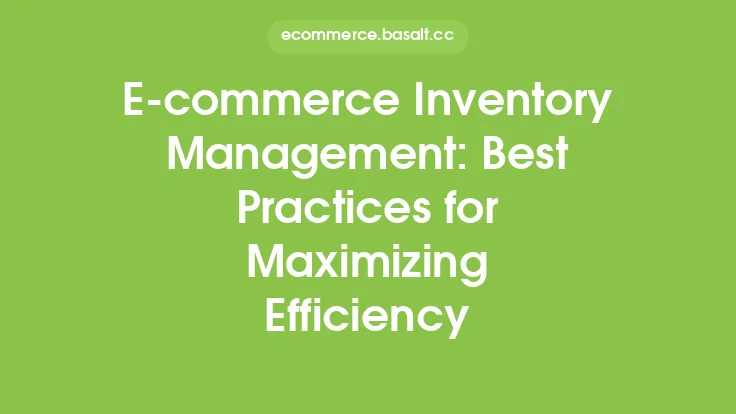As an e-commerce business, managing inventory is crucial to ensuring that customers can find and purchase the products they need, when they need them. However, during peak seasonal periods, inventory management can become even more complex. Seasonal inventory management requires careful planning, forecasting, and execution to meet the changing demands of customers during holidays, summer sales, and other peak shopping periods.
Understanding Seasonal Demand
To develop an effective seasonal inventory management strategy, it's essential to understand the seasonal demand patterns of your products. Analyze historical sales data to identify which products are in high demand during specific seasons or holidays. This will help you to anticipate and prepare for fluctuations in demand. Consider factors such as weather, cultural events, and consumer behavior to forecast demand accurately. For example, a retailer selling winter clothing may experience high demand for coats and gloves during the winter months, while a retailer selling outdoor furniture may see increased demand during the summer.
Inventory Forecasting and Planning
Inventory forecasting and planning are critical components of seasonal inventory management. Use data analytics and forecasting tools to predict demand and adjust inventory levels accordingly. Consider the following factors when forecasting demand:
- Historical sales data
- Seasonal trends
- Weather patterns
- Cultural events
- Consumer behavior
- Market trends
Develop a comprehensive inventory plan that outlines the types and quantities of products to be stocked, as well as the timing of inventory replenishment. This plan should be regularly reviewed and updated to ensure that it remains aligned with changing demand patterns.
Managing Inventory Levels
Effective inventory management is crucial during peak seasonal periods. Ensure that inventory levels are optimized to meet demand, without overstocking or understocking. Consider the following strategies to manage inventory levels:
- Just-in-time (JIT) inventory management: This involves ordering and receiving inventory just in time to meet customer demand, reducing the need for storage and minimizing waste.
- Drop shipping: This involves partnering with suppliers to ship products directly to customers, reducing the need for inventory storage and handling.
- Inventory replenishment: Regularly review inventory levels and replenish stock as needed to ensure that products are available to meet customer demand.
Supply Chain Optimization
A well-optimized supply chain is essential for effective seasonal inventory management. Ensure that your supply chain is agile and responsive to changing demand patterns. Consider the following strategies to optimize your supply chain:
- Build relationships with reliable suppliers: Develop strong relationships with suppliers to ensure that they can meet your inventory needs during peak seasonal periods.
- Implement a vendor-managed inventory (VMI) system: This involves partnering with suppliers to manage inventory levels, reducing the need for manual inventory management.
- Invest in transportation management: Ensure that products are delivered to customers quickly and efficiently, reducing the risk of stockouts and overstocking.
Technology and Automation
Technology and automation can play a critical role in seasonal inventory management. Consider investing in the following technologies to streamline inventory management:
- Inventory management software: This can help to automate inventory tracking, forecasting, and replenishment.
- Automated storage and retrieval systems (AS/RS): This can help to optimize inventory storage and retrieval, reducing the need for manual labor.
- Data analytics tools: This can help to analyze sales data and forecast demand, ensuring that inventory levels are optimized to meet customer demand.
Best Practices for Seasonal Inventory Management
To ensure effective seasonal inventory management, consider the following best practices:
- Regularly review and update inventory plans to ensure that they remain aligned with changing demand patterns.
- Monitor inventory levels closely, using data analytics and forecasting tools to anticipate and respond to changes in demand.
- Develop strong relationships with suppliers to ensure that they can meet your inventory needs during peak seasonal periods.
- Invest in technology and automation to streamline inventory management and reduce the risk of errors.
- Consider implementing a JIT inventory management system to reduce the need for storage and minimize waste.
Conclusion
Seasonal inventory management is a critical component of e-commerce success, particularly during peak seasonal periods. By understanding seasonal demand patterns, forecasting and planning inventory, managing inventory levels, optimizing the supply chain, leveraging technology and automation, and following best practices, e-commerce businesses can ensure that they are well-prepared to meet the changing demands of customers during holidays, summer sales, and other peak shopping periods. By implementing these strategies, e-commerce businesses can reduce the risk of stockouts and overstocking, improve customer satisfaction, and drive revenue growth.





